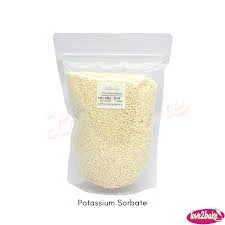
sodium benzoate pharmaceutical use
Sodium Benzoate Pharmaceutical Uses and Applications
Sodium benzoate, a sodium salt of benzoic acid, is a widely utilized compound in various industries due to its antimicrobial properties and efficacy as a preservative. Within the realm of pharmaceuticals, it serves several crucial functions that impact both drug formulation and safety.
Chemical Properties and Safety
Sodium benzoate is recognized for its high solubility in water, making it an ideal candidate for use in various aqueous formulations. Its molecular formula is C7H5NaO2, and it appears as a white crystalline powder. This compound is Generally Recognized As Safe (GRAS) by the FDA when used within specified limits, although it is important to monitor its concentration in products to avoid any potential adverse effects. In temperatures exceeding 100°C, sodium benzoate can degrade to form potentially harmful byproducts, thus raising safety concerns in pharmaceutical applications.
Preservative Agent
One of the primary pharmaceutical uses of sodium benzoate is as a preservative. It is effective against a broad spectrum of bacteria and fungi, making it valuable in medicines, food products, and cosmetics. By inhibiting microbial growth, sodium benzoate extends the shelf life of pharmaceutical products, ensuring that medications retain their potency over time. This is particularly important in liquid formulations, where the risk of contamination is higher. Its ability to function effectively at low pH levels further enhances its utility, as many pharmaceutical products are acidic, which promotes the compound's stability and antimicrobial efficacy.
Role in Drug Formulation
sodium benzoate pharmaceutical use

Sodium benzoate is also employed as a stabilizing agent in pharmaceutical formulations. It can help maintain pH levels in drugs, crucial for ensuring the stability of active ingredients. Many active pharmaceutical ingredients (APIs) are sensitive to pH changes; thus, incorporating sodium benzoate allows formulators to create more stable and effective products. Beyond its preservative and stabilizing characteristics, sodium benzoate can also influence the solubility of certain pharmaceuticals, facilitating better absorption in the body.
Therapeutic Applications
Beyond its role as a preservative and stabilizer, sodium benzoate exhibits potential therapeutic applications. It has been studied for use in treating hyperammonemia, a condition characterized by elevated ammonia levels in the blood. Sodium benzoate can help decrease ammonia concentrations by promoting its excretion through urine, particularly benefiting patients with urea cycle disorders. Furthermore, ongoing research is exploring its potential in treating neurological disorders and certain metabolic conditions.
Challenges and Considerations
Despite its many advantages, the use of sodium benzoate in pharmaceuticals does come with challenges. Some individuals exhibit hypersensitivity to the compound, which can lead to allergic reactions. Moreover, when combined with ascorbic acid (vitamin C) in certain products, sodium benzoate can form benzene, a known carcinogen, under specific conditions such as exposure to heat and light. This emphasizes the need for careful formulation practices and thorough testing during the development of pharmaceutical products containing sodium benzoate.
Conclusion
In summary, sodium benzoate serves as a multifaceted compound in the pharmaceutical industry. Its preservative properties ensure the longevity and efficacy of medications, while its stabilizing effects promote optimal drug formulation. Additionally, its therapeutic potential offers new avenues for treatment in specific medical conditions. However, safety considerations must be taken into account, prompting ongoing research and awareness within the pharmaceutical community. As we advance in our understanding and application of sodium benzoate, it remains an essential element in the formulation of safe and effective pharmaceutical products.
-
Pure Sodium Dichloroisocyanurate Dihydrate | Powerful DisinfectantNewsAug.29,2025
-
Industrial Chemicals: Quality & Purity for Every IndustryNewsAug.28,2025
-
Nitrile Rubber Honoring Strict Production StandardsNewsAug.22,2025
-
Aspartame Ingredients Honoring Food Safety ValuesNewsAug.22,2025
-
Fertilizer for Balanced Plant NutritionNewsAug.22,2025
-
Cyanide Gold Processing with High Purity AdditivesNewsAug.22,2025
-
Formic Acid in Textile Dyeing ApplicationsNewsAug.22,2025
Hebei Tenger Chemical Technology Co., Ltd. focuses on the chemical industry and is committed to the export service of chemical raw materials.
-

view more DiethanolisopropanolamineIn the ever-growing field of chemical solutions, diethanolisopropanolamine (DEIPA) stands out as a versatile and important compound. Due to its unique chemical structure and properties, DEIPA is of interest to various industries including construction, personal care, and agriculture. -

view more TriisopropanolamineTriisopropanolamine (TIPA) alkanol amine substance, is a kind of alcohol amine compound with amino and alcohol hydroxyl, and because of its molecules contains both amino and hydroxyl. -

view more Tetramethyl Thiuram DisulfideTetramethyl thiuram disulfide, also known as TMTD, is a white to light-yellow powder with a distinct sulfur-like odor. It is soluble in organic solvents such as benzene, acetone, and ethyl acetate, making it highly versatile for use in different formulations. TMTD is known for its excellent vulcanization acceleration properties, which makes it a key ingredient in the production of rubber products. Additionally, it acts as an effective fungicide and bactericide, making it valuable in agricultural applications. Its high purity and stability ensure consistent performance, making it a preferred choice for manufacturers across various industries.





